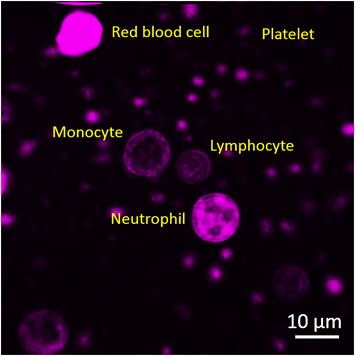We Realize in vivo Imaging Cytometry of Leukocytes for the First Time in the World
In vivo study of leukocytes is challenging due to its nature of fast trafficking, multiple lineages, frequent cell-cell interactions, and dynamic activation or maturation in a process of immune response. People commonly used confocal or multiphoton fluorescence microscopy to track labeled cells and study their in vivo dynamics and microenvironments of immune system at a high spatial and temporal resolution. But for future clinical application, a labeling free virtual optical biopsy method is required. Without a labeling, our lab demonstrated that granules in leukocytes have distinctive third harmonic generation (THG) contrast. Excited by a 1230nm femtosecond laser, THG signals were generated at a significantly higher level in neutrophils than other mononuclear cells, whereas signals in agranular lymphocytes were one order smaller. These characteristic THG features can also be observed in vivo to trace the newly recruited leukocytes following lipopolysaccharide (LPS) challenge. Furthermore, using video-rate THG microscopy, we can capture images in human capillaries. According to the size and average intensity of cells in THG images, in a two-dimensional scatter plot, the neutrophils, monocytes, and lymphocytes were clustered into three differentiable groups. The THG imaging-based counting results agreed well with conventional blood count results. In the future, we believe that the combination of this THG microscopy-based imaging cytometry approach with advanced texture analysis of sub-cellular features can differentiate and count more types of blood cells with smaller quantities of blood.



